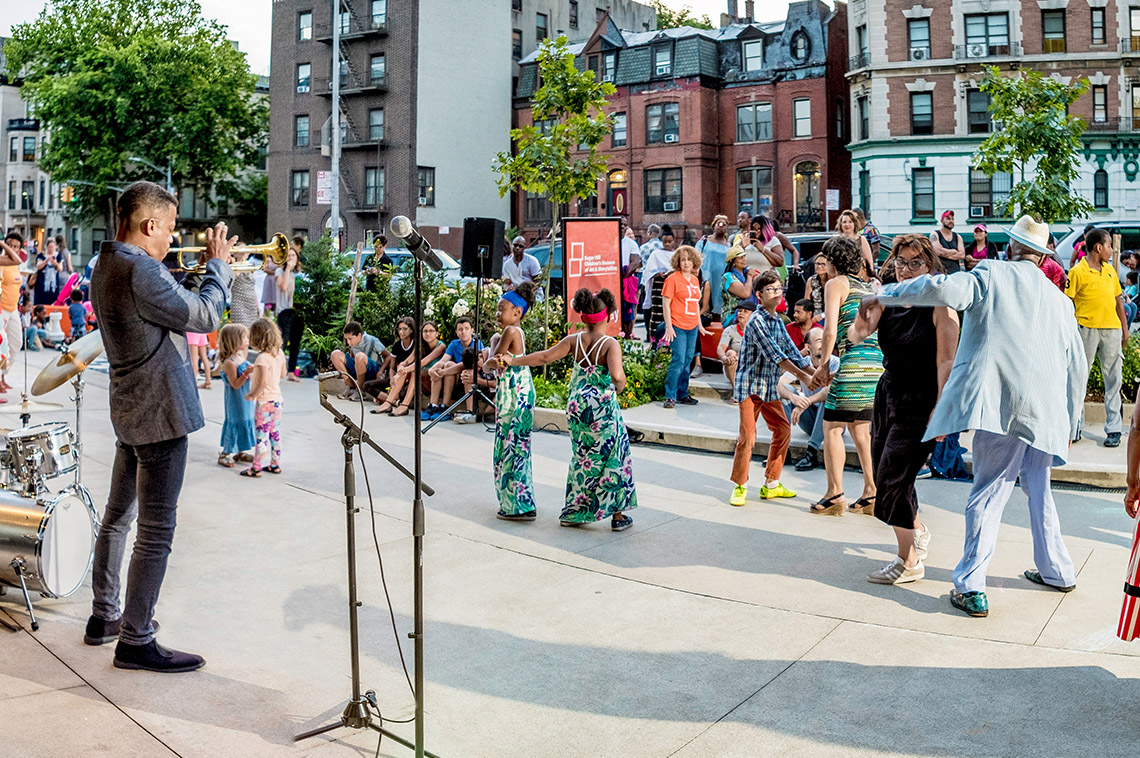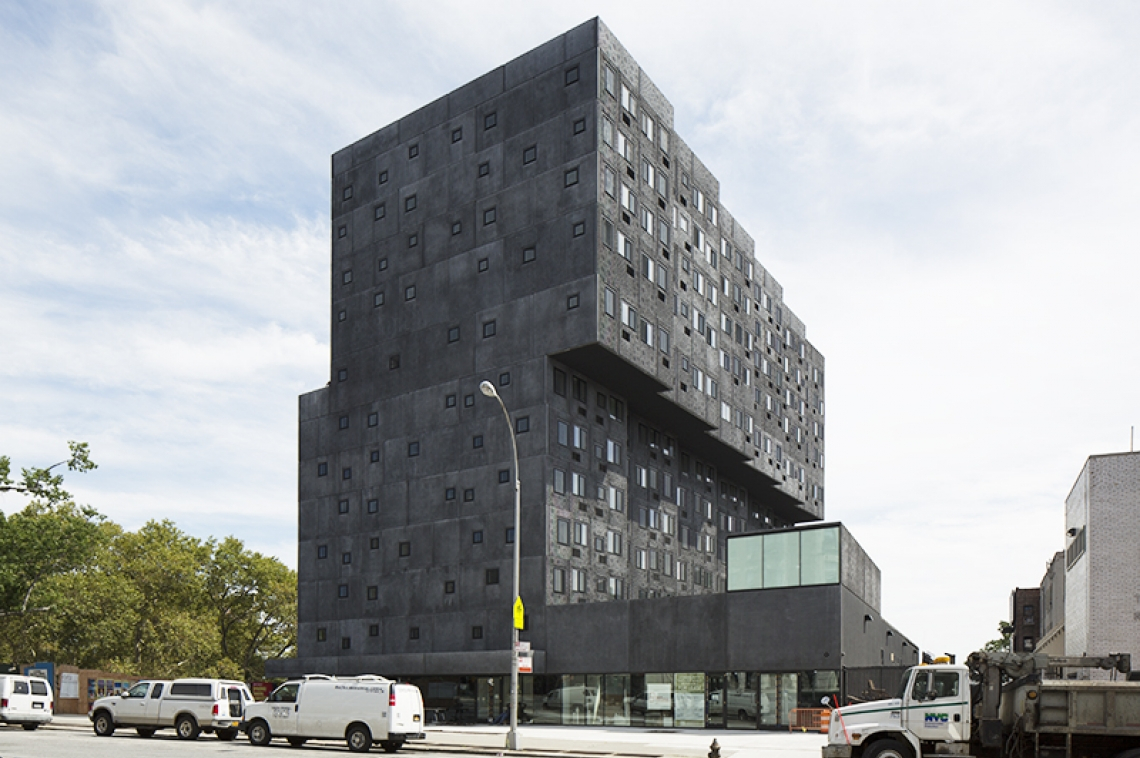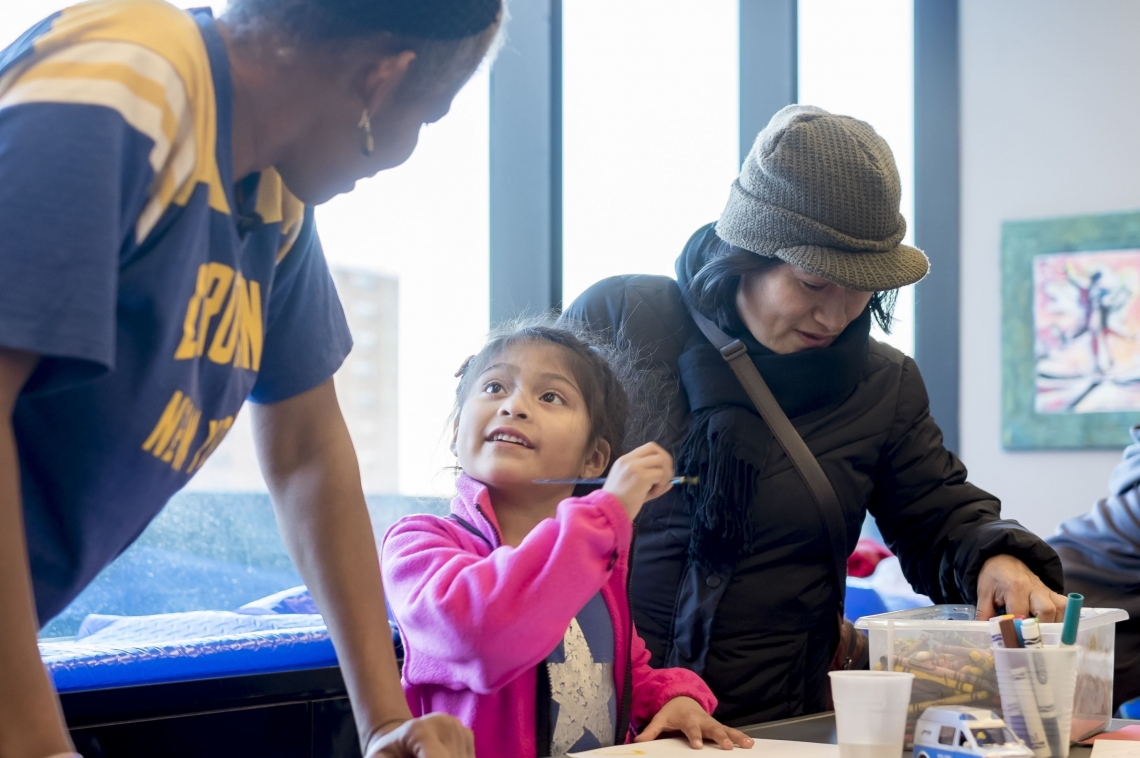


A version of this post originally appeared on Impacting Our Future and in print in USA Today.
When internationally renowned architect Sir David Adjaye was selected to design a building for an affordable housing nonprofit in New York City, people took notice. When the project included a children’s museum of art and storytelling along with a preschool—in addition to 124 beautifully appointed, permanent living spaces for low-income and formerly homeless people and families—it transformed any preconception of what supportive housing is “supposed” to be.
The development, where many residents also work, is called the Sugar Hill Project: a truly mixed-use building where Harlem residents interact daily with working artists, educators, and neighbors to create a place of belonging and opportunity.
Ellen Baxter is the executive director of Broadway Housing Communities, the organization behind Sugar Hill. She has found that prioritizing arts and culture in the project has “elevated the spirit of community engagement, enriched the space for everyone,” and brought “inspiration and relief” to struggling communities.
When a building truly speaks to the people it impacts, as Sugar Hill does, neither the building nor its residents are stigmatized in the way that supportive housing too often is. Entering the building doesn’t “mark” you.
The preschool builds a sense of ownership in young residents and in the community: kids mix with children from other backgrounds, interact with their teachers in the neighborhood, and visit with each other at the museum’s family days, festivals, and art exhibits.
The museum, too, combats the stigma of poverty and homelessness, with 17,000 square feet of space designed to fuel the imaginations and dreams of its visitors. The Sugar Hill Project is a true integration of art, housing, economic development, and education. It’s a place for the neighborhood to celebrate its history and culture while creating its future.
The Sugar Hill Children’s Museum of Art & Storytelling (SHCMAS), offers access to the arts for young children and their families, particularly those living in communities with few opportunities for the sustained arts exposure that creates pathways for learning. SHCMAS is the cultural capstone of the Sugar Hill Project, build by Broadway Housing Communities and designed by acclaimed architect David Adjaye. Conceived as an oasis for underserved children and families, the Sugar Hill Project also includes 124 units of permanently affordable housing and an early childhood center with the capacity to serve up to 200 children, among other resources. SHCMAS offers the youngest New Yorkers and their families a museum environment as stimulating, as beautiful, and as safe, as any other in the city. Exhibition, storytelling and education programs support the cognitive and creative development of children ages three to eight with regular opportunities to engage with working artists, access to well-equipped art making facilities, and firsthand experiences with historically significant and important contemporary artwork. Moreover, a close partnership with the on-site Sugar Hill Museum Preschool enables the Museum to serve as a laboratory for innovation in arts education, extending the reach and impact of Museum programs. A new arts education curriculum for young children, based on principles of visual inquiry, will begin with Museum Preschool students and be replicated with students in neighborhood schools.
The Sugar Hill Children's Museum of Art & Storytelling is featured in the ArtPlace exhibition “10 Sectors, 10 Solutions: Artists and Community Change,” which opened at the University of Maryland School of Architecture, Planning & Preservation on October 5, 2018 and is on view until January 1, 2019.





